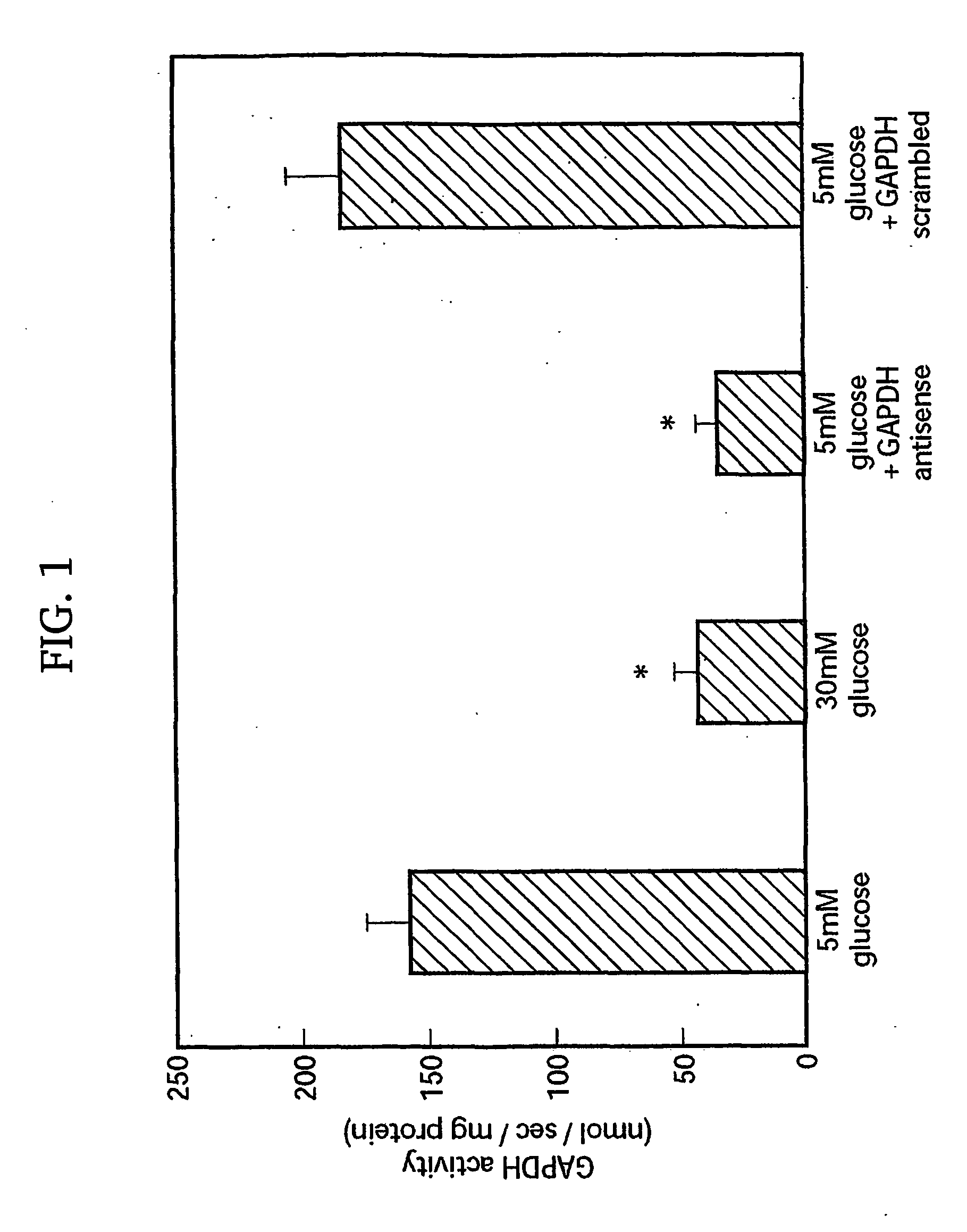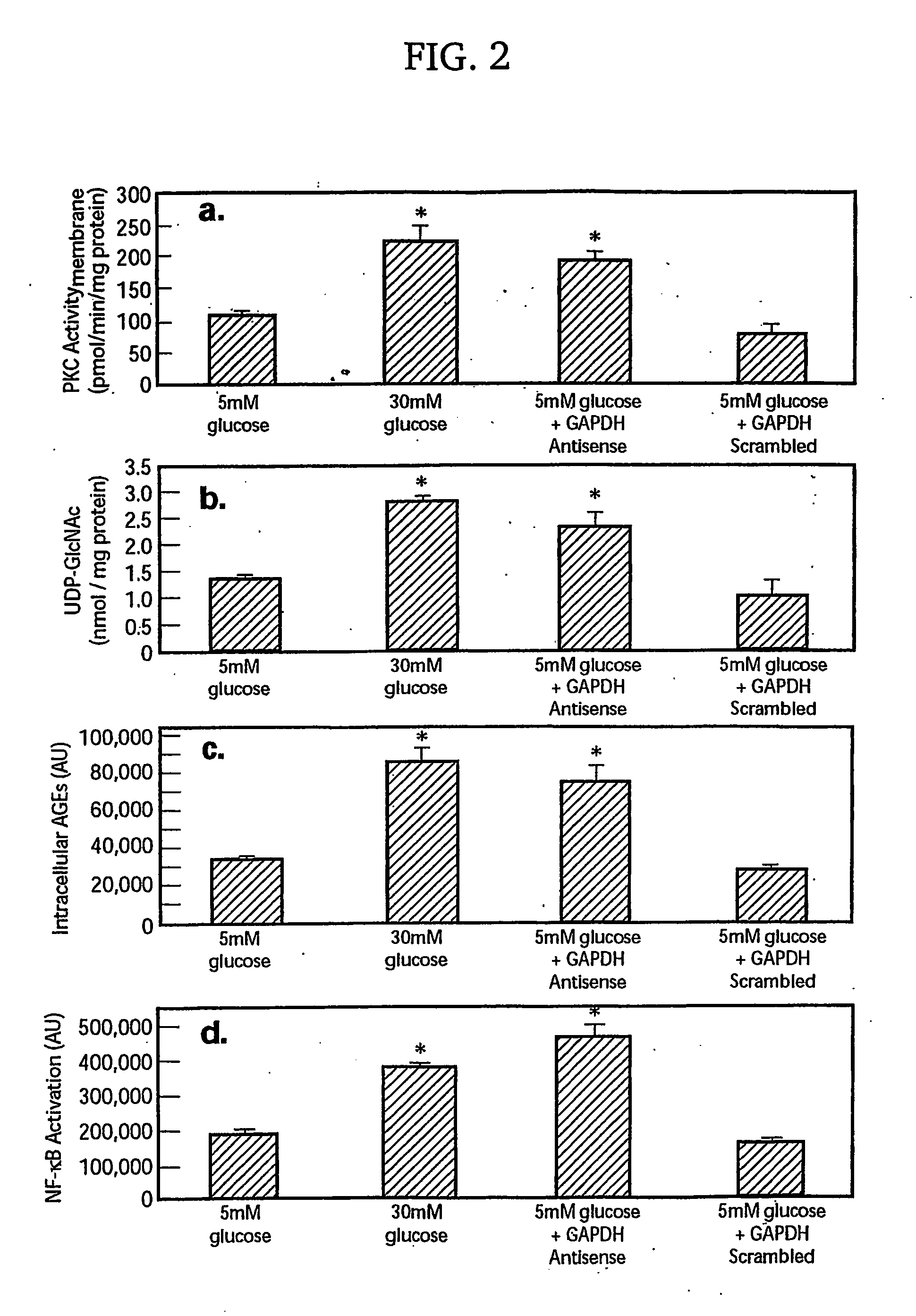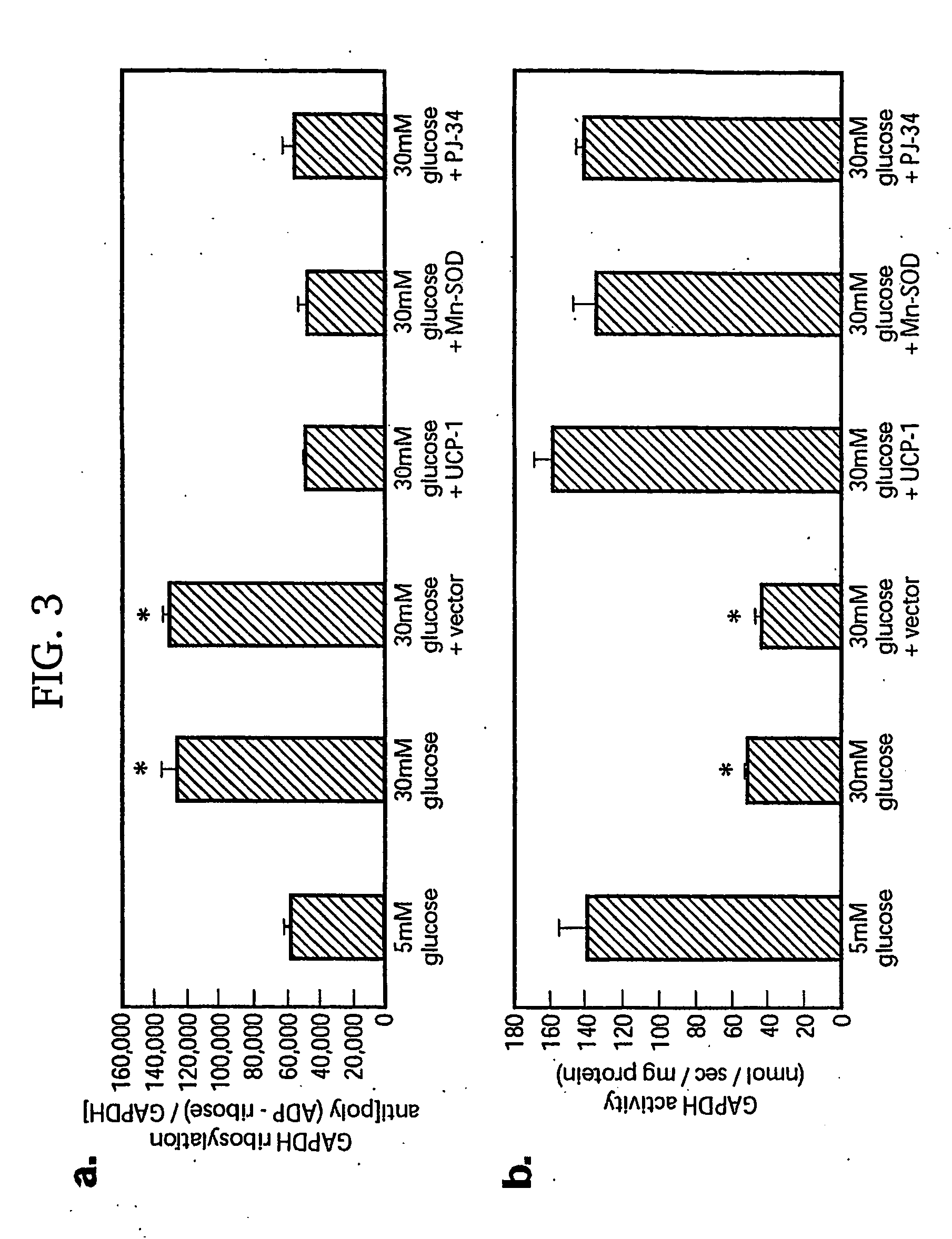Use of Parp Inhibitors for Prevention and Treatment of Diabetic and Insulin Resistance Complications
a technology of parp inhibitors and complications, applied in the direction of drug compositions, peptides, metabolic disorders, etc., can solve the problems of hyperglycemia (or free fatty acid) overproduction of superoxide, ineffective macrovascular treatment, and inability to cure macrovascular diseas
- Summary
- Abstract
- Description
- Claims
- Application Information
AI Technical Summary
Benefits of technology
Problems solved by technology
Method used
Image
Examples
example 1
Inhibition of GAPDH Activity by Poly(ADP-ribose) Polymerase Activates Three Major Pathways of Hyperglycemic Damage in Endothelial Cells
example summary
[0166]In this report, we show that hyperglycemia-induced overproduction of superoxide by the mitochondrial electron transport chain activates the three major pathways of hyperglycemic damage found in aortic endothelial cells (activation of protein kinase C isoforms, hexosamine pathway flux, and advanced glycation endproduct formation) by inhibiting GAPDH activity. In bovine aortic endothelial cells, GAPDH antisense oligonucleotides activated each of the pathways of hyperglycemic vascular damage in cells cultured in 5 mM glucose to the same extent as that induced by culturing cells in 30 mM glucose. Hyperglycemia-induced GAPDH inhibition was found to be a consequence of poly(ADP-ribosyl)ation of GAPDH by poly(ADP-ribose) polymerase (PARP), which was activated by DNA strand breaks produced by mitochondrial superoxide overproduction. Both the hyperglycemia-induced decrease in activity of GAPDH and its poly(ADP-ribosyl)ation were prevented by overexpression of either uncoupling protein-...
example 2
Further Studies of the Mechanisms of the Pathology of Diabetic Complications
[0201]It is known that hyperglycemia is a major independent risk factor for accelerated atherosclerosis. The recent Insulin Resistance and Atherosclerosis Study (IRAS) demonstrates that there is also a strong link between insulin resistance itself and atherosclerosis, even in the absence of diabetes. Insulin resistance promotes atherosclerosis primarily by increasing free fatty acid release from, or defective uptake of free fatty acids into, adipocytes. This dysregulation of fatty acid metabolism causes a pro-atherogenic dyslipidemia by increasing free fatty acid delivery to the liver.
[0202]Recently, increased free fatty acids, like increased glucose, have been found to inhibit endothelial cell nitric oxide-dependent vasodilatation in normal subjects. Since mitochondrial β-oxidation of fatty acids yields the same electron donors as those obtained from glucose metabolism, that is, NADH and FADH2, we hypothesi...
PUM
| Property | Measurement | Unit |
|---|---|---|
| molecular weight | aaaaa | aaaaa |
| pH | aaaaa | aaaaa |
| resistance | aaaaa | aaaaa |
Abstract
Description
Claims
Application Information
 Login to View More
Login to View More - R&D
- Intellectual Property
- Life Sciences
- Materials
- Tech Scout
- Unparalleled Data Quality
- Higher Quality Content
- 60% Fewer Hallucinations
Browse by: Latest US Patents, China's latest patents, Technical Efficacy Thesaurus, Application Domain, Technology Topic, Popular Technical Reports.
© 2025 PatSnap. All rights reserved.Legal|Privacy policy|Modern Slavery Act Transparency Statement|Sitemap|About US| Contact US: help@patsnap.com



